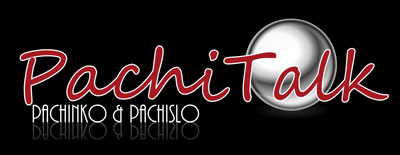Well it's been just over a month since I first mentioned that I was working on this project, and thought that since I've just reached a major milestone, it would be a good idea to post a progress update, and let you all know how it's going.
Just in case you haven't read my previous posts, the goal of this project is to produce a small 'dongle' that plugs into the D-25 card unit connector on the back of a pachinko/palot machine, and closely emulates the function of the card reader unit in a pachinko parlour (ie dispensing balls when the ball loan button is pressed). This is intended to give a more authentic parlour experience to your home machines, and will help reduce the amount of manual ball handling neccesary while playing (almost eliminating it completely when used in conjunction with a ball lift unit).
The project has been informally named 'Enhanced Card Reader Emulator Dongle' mainly because I think it sounds impressive, but also because it can be abbreviated to 'Encredongle'I did try to think of a suitable name that started with an 'I', but after a while I thought that the time would be better spent on other aspects of the project.
The hardware design is pretty much completed, I have a prototype (built on stripboard) which I've had running for 24 hours a day for the past week or two (picture attached below). Initially there was a bit of a power regulation problem, and the prototype got too hot for comfort, but a couple of redesigns of the power conversion circuitry, and everything is fine. Thermal performance is quite important in this design, as the final circuit board will end up in a plastic box that is only 1.5" x 2", so it was neccesary to get this right before working on any other aspects of the design.
The PCB layout has already been designed. This was done before working on the software for the microcontroller, as due to the compact size of the board, it's a lot easier to decide which pin of the microcontroller is connected to which function by doing it on the layout design, rather than doing the software first then struggling to fit all the connections on the board. There are a few component placements on the board that were found not to be neccesary when the prototype was tested, so there will be some minor modifications to the layout and then I'll order a small batch of 'sample' boards for beta testing (more on this later!).
I began work on the software last week, and progress was good on the 'building blocks' of the software, ie display routines, switch reading, timers and counters, but the interrupts proved to be a bit more effort. It wasn't helped by me blowing up my microcontroller programmer, by plugging the in-circuit programming cable into the prototype PCB back to front! A short delay while I waited for the parts to fix it, and I was back coding again!
All the individual parts have finally come together this morning, and for the first time I have a self-contained unit that correctly displays the credit balance, loads a preset credit value when the card return button is held for 5 seconds, and dispenses 25 balls whenever the ball loan button is pressed (as long as there is still credit available).
Next step on the software front is to add the code for the various operation modes (freeplay, ball counter, card unit emulator, cash unit emulator) and also add the code neccesary for a setup mode, where all these user options can be modified. I'm also looking into adding an option for the credit balance to be contained in an external smartcard, so that the experience can be that little bit closer to the one in a real pachinko parlour.
Now on to the real motivation for this posting !
Once the PCBs for the sample units have arrived and they have been assembled, I could do with a few 'beta testers' who would be willing to help check that the unit operates correctly on as many machines from as many manufacturers as possible. So if you've got a suitable selection of machines, and you would be willing to help out (and get a free sneak preview!), then please send me a Private Message and let me know the list of machines you'd be able to try it out on, and which country/area you're in. Obviously due to logistics, there will be a little bit of a bias towards people that are located in the UK/Europe, but if you have machines that I can't find more locally then I don't mind where in the world you are.
Looking to the next stages, I'm expecting the software completion and testing phase to last another month or two, so the aim will be to begin production in April. Despite a few changes to the design, it looks like everything still adds up for the original target price of £25 (approx $50), and if bought through the PachiTalk auction site, I should be able to include free worldwide shipping for all orders of more than one unit.








 Reply With Quote
Reply With Quote


